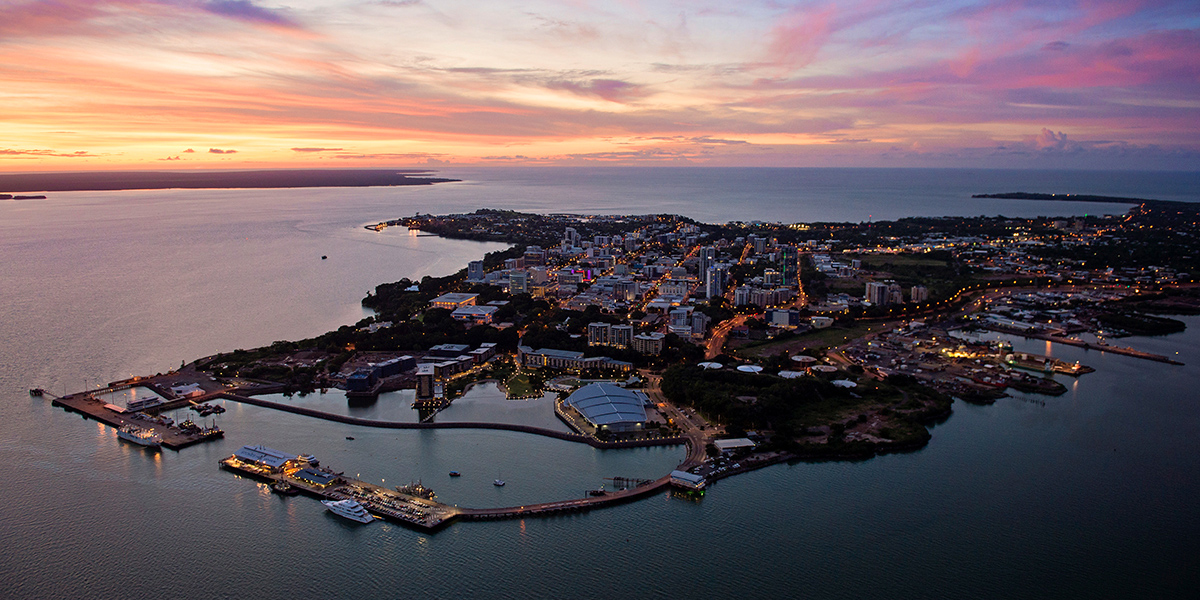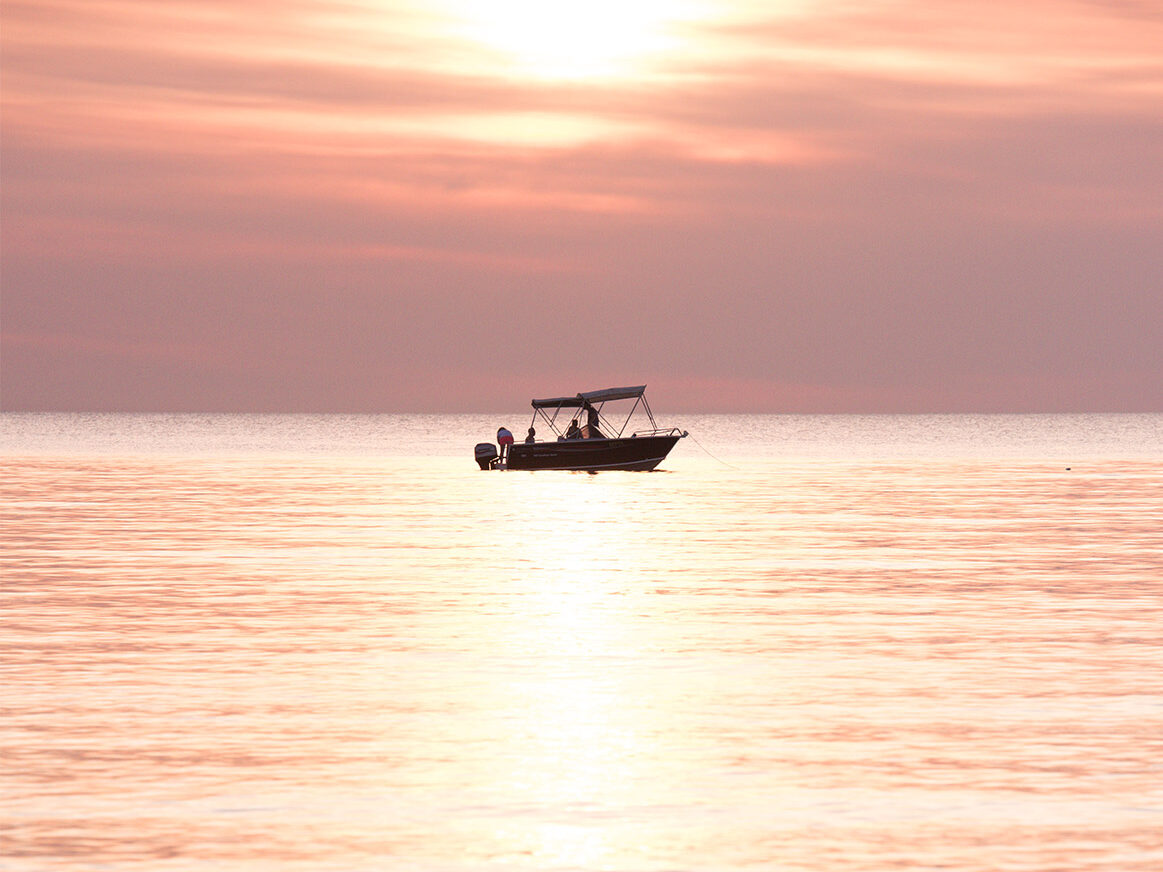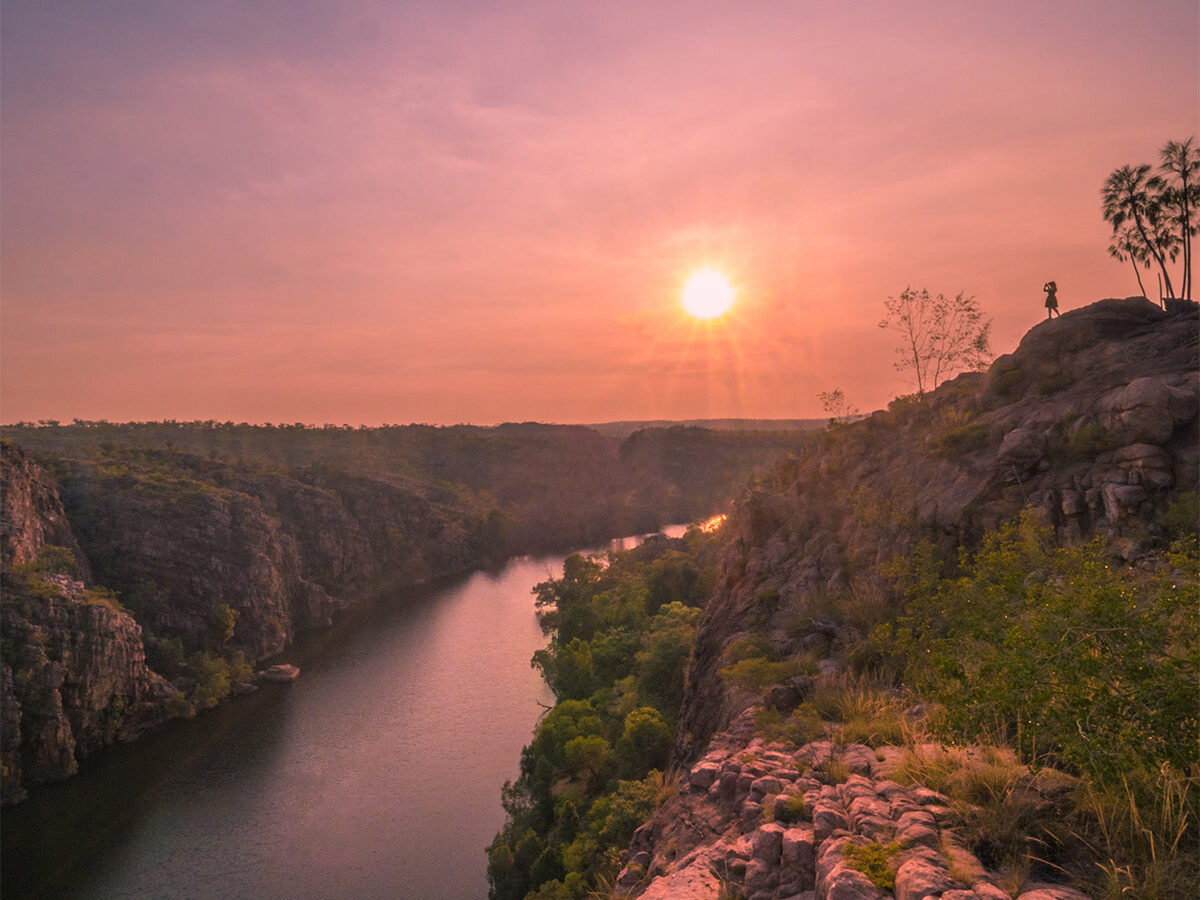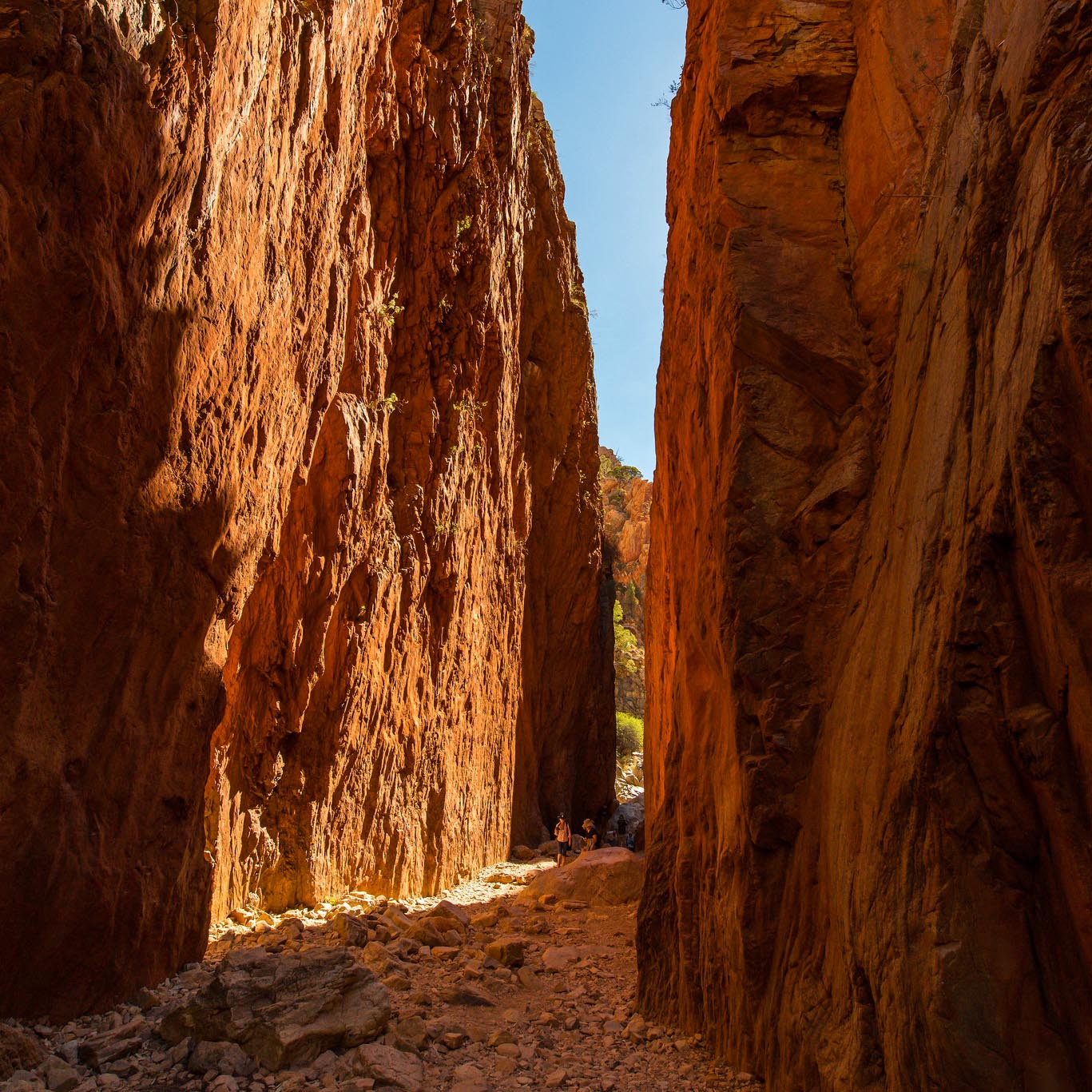From the earthy splendor of the Red Centre to the lush wilderness of the Top End, the Northern Territory boasts an array of scenic regions with cinematic potential. In this Location Spotlight, we’ll take you on a journey through this stunningly diverse region, exploring the top five locations that could make the Northern Territory the perfect base for your next film production.
Darwin – The Front Door To Australia

Darwin, the capital city of the Northern Territory, is often referred to as the “front door of Australia” due to its strategic location at the northernmost point of the country.
Over the years Darwin has proved a popular filming location, with productions including romantic comedy Top End Wedding (2019), Baz Luhrmann epic Australia (2008) and Robert Connolly’s thriller Balibo (2009) in which Darwin doubled for East Timor.
The city is home to a range of unique landscapes, from rugged coastlines to lush tropical rainforests. The close proximity of these locations provide filmmakers with a wealth of opportunities to capture magnificent shots that would be difficult to find elsewhere.
Popular filming locations within easy reach of Darwin include Litchfield National Park (featuring a range of waterfalls and swimming holes) the Tiwi Islands (two large islands located off the coast of Darwin) and the Mary River Wetlands (located just a short drive from Darwin).

A major advantage of filming in Darwin is its proximity to Asia, as the city is located closer to Southeast Asia than it is to some of Australia’s major cities.
With an international airport in Darwin that operates without a curfew, the city is just a few hours’ flight from some of the region’s largest cities, including Singapore, Jakarta, and Kuala Lumpur, making it an ideal location for productions with an international cast and crew, and perfect for productions that may require 2nd Unit shooting in multiple locations throughout the Southeast Asian region.
The Top End region of the Northern Territory that encompases Darwin has a population density of around 0.5 people per square mile, similar to that of Alaska. This low population density makes the Darwin region an ideal location for historical, genre, or sci-fi projects that require an unspoiled, natural setting without human interference.
LITCHFIELD NATIONAL PARK

Litchfield National Park lies approximately 80 miles (130 km) southwest of Darwin and covers around 580 square miles (1,500 km2). It is home to several stunning waterfalls that cascade into crystal clear pools, iconic magnetic termite mounds, monsoon rainforests and clusters of weathered sandstone pillars.
Litchfield National Park is an ancient landscape shaped by water. Aboriginal people have lived throughout the area for thousands of years. It is important to the Koongurrukun, Mak Mak Marranunggu, Werat and Warray Aboriginal people. Their ancestral spirits formed the landscape, plants and animals and are still present in the landscape today.
ARNHEM LAND

Wider Arnhem Land and the bordering Kakadu National Park is a historical region of the Northern Territory where impressive mountain ridges and stone structures contrast rich wetlands and pristine water systems. It is located in the north-eastern corner of the Northern Territory.
The area covers about 37,500 square miles (97,000 km2) and has an estimated population of 16,000 of whom 12,000 are Indigenous. The Northern Land Councils administer permit applications for all Indigenous communities in the area and Screen Territory can assist with this process.

Arnhem Land is located 310 miles (500 km) from Darwin. Various airfields exist within Arnhem Land, including a sealed all-weather airstrip at Gunbalanya. These airstrips are often used to re-supply and travel between remote outstations.
Productions that have filmed in Arnhem land include High Ground (2020), Crocodile Dundee (1986), Bear Grylls’ Man Vs Wild (2010), Ten Canoes (2006), and Charlie’s Country (2013).
Nitmiluk and Katherine Region

Nitmiluk National Park is 150 miles (244 km) southeast of Darwin, and is set around a series of gorges on the Katherine River.
There are two main sections to the park – Nitmiluk Gorge to the south and Edith Falls to the north.
Nitmiluk Gorge, a deep gorge carved through ancient sandstone, is the central attraction of the park, made up of 13 gorges in total, with rapids and falls.
Leliyn (Edith Falls) features beautiful swimming holes. This diverse and spectacular landscape of Nitmiluk is where Jawoyn people live, work and continue to share their culture with the community.
Nitmiluk featured in Top End Wedding and the final challenge for The Amazing Race Australia.


Alice Springs and surrounds

Alice Springs is a remote town in Australia’s Northern Territory, halfway between Darwin and Adelaide which serves as a popular gateway for exploring the country’s interior desert region. Nestled between the East and West MacDonnell Ranges, ‘Alice’ is famous for its beautiful desert landscapes, colourful outback characters, opportunities for adventure and a strong Aboriginal culture.
Amazon scripted series The Lost Flowers of Alice Hart, starring Sigourney Weaver, recently filmed in and around Alice Springs, including Standley Chasm and Alice Springs Desert Park.
Other recent productions in the region include the children’s live action drama series MaveriX, and the detective drama miniseries True Colours, both filmed in Alice Springs.

Standley Chasm is a 250 ft (80 m) sheer rock-face along a well maintained trail following the natural creek bed. Surrounded by the West MacDonnell Ranges National Park, it is located in a private flora and fauna reserve owned by the Iwupataka Land Trust. A unique Aboriginal Owned & Operated enterprise, Angkerle Aboriginal Corporation is owned by the local community members who are direct descendants of the Western Arrernte Aboriginal people, that have lived in this area for tens of thousands of years.

The MacDonnell Ranges, located just outside Alice Spings, is a mountain range spanning over 15,000 square miles. Covering a region comparable to the size of Belgium, the area has been featured in films such as Sweet Country (2017) and The Adventures of Priscilla, Queen of the Desert (1994).
Whilst seemingly remote, the location features the nearby Kings Canyon Resort and its deluxe hotel rooms, which provides easy transport access via the Kings Canyon airport.

Watarrka National Park‘s scenic landscape of rugged ranges, rockholes and gorges is a highlight for visitors to Central Australia.
At Kathleen Springs the relics of old stockyards can be seen along the walk to the permanent waterhole. Just a short drive away, one of the most spectacular canyons in Central Australia, Kings Canyon, is notable for its permanent rock pools, as well as some well-preserved Aboriginal artworks in the area.


Photo Credit: Night Sky over Watarrka National Park” – Tourism NT / Matt Glastonbury

